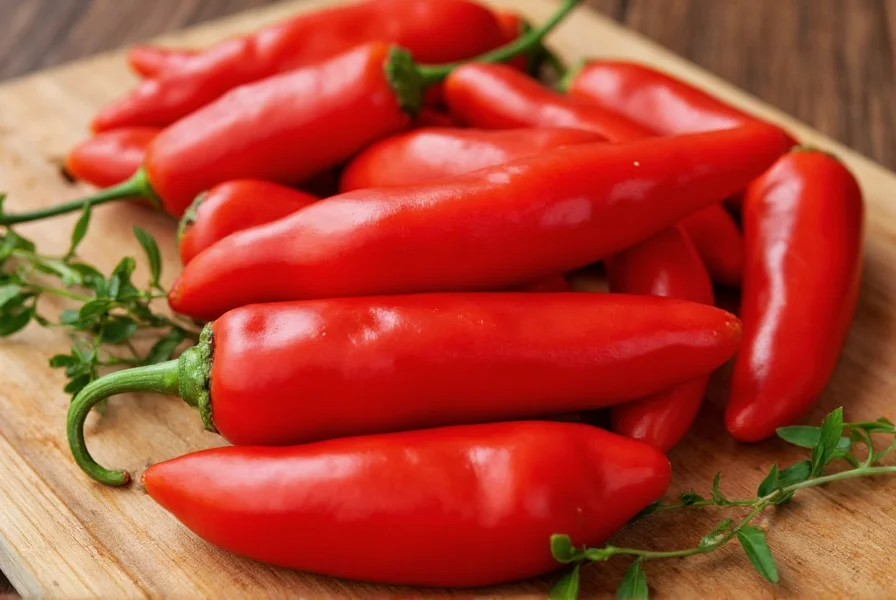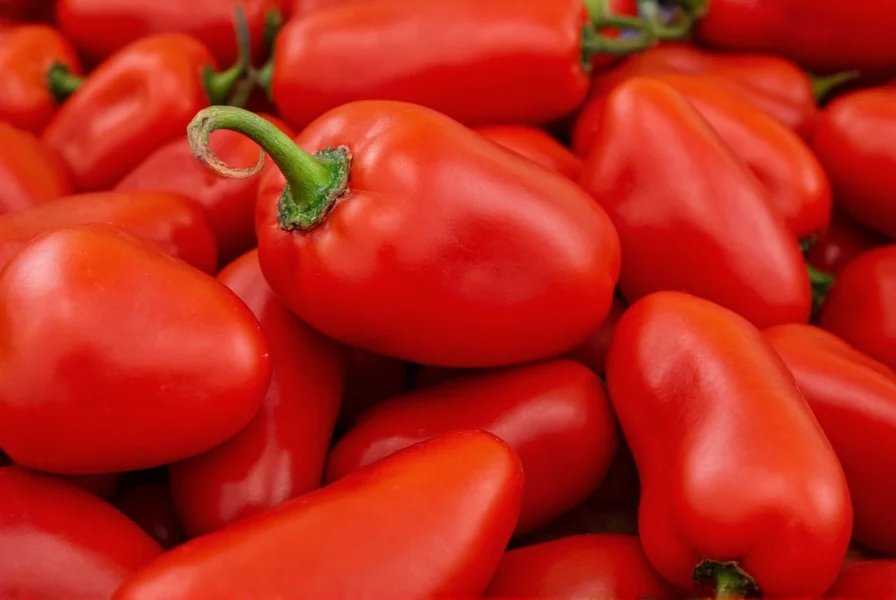
Understanding the Pimento Pepper: More Than Just a Garnish
When exploring the world of sweet peppers, the pimento stands out as a culinary favorite with distinctive characteristics. Native to South America but now cultivated globally, this pepper has become a staple in Mediterranean and Spanish cuisines. Its scientific name is Capsicum annuum, placing it in the same family as bell peppers, jalapeños, and cayenne peppers, though its flavor profile sets it apart.Physical Characteristics and Flavor Profile
Pimento peppers typically measure 3-4 inches in length with a distinctive heart shape. They start green and mature to a deep, glossy red. What makes them special is their remarkably sweet taste with only the faintest hint of heat—they register between 100-500 Scoville Heat Units, making them significantly milder than even the mildest jalapeño (which starts around 2,500 SHU).| Pepper Type | Scoville Heat Units | Flavor Profile | Common Uses |
|---|---|---|---|
| Pimento Pepper | 100-500 | Sweet, fruity, mild | Stuffing, roasting, cheese spreads |
| Bell Pepper | 0 | Sweet, vegetal | Raw in salads, cooking, stuffing |
| Cherry Pepper | 500-5,000 | Sweet with noticeable heat | Stuffed, pickled, garnishes |
Distinguishing Pimentos from Similar Peppers
Many people confuse pimento peppers with bell peppers or cherry peppers, but key differences exist. While bell peppers have thicker walls and a more pronounced vegetal flavor, pimentos feature thinner walls and a more complex sweetness. Compared to cherry peppers (which are rounder and often hotter), pimentos offer a milder experience with their distinctive heart shape. The difference between pimento and bell pepper primarily lies in their wall thickness and flavor complexity—pimentos are preferred for applications where the pepper needs to absorb flavors, such as when stuffed or pickled.Culinary Applications of Pimento Peppers
Pimento peppers shine in numerous culinary applications thanks to their sweet, mild profile:- Classic pimento cheese - The traditional Southern spread combines shredded cheddar, mayonnaise, and finely diced pimentos
- Stuffed olives - Those small red pieces inside green olives? That's pimento, added for visual contrast and subtle sweetness
- Roasted pepper spreads - Blended with garlic, olive oil, and herbs for a versatile dip or sandwich spread
- Pimentos de padrón preparation - In Spanish cuisine, they're often pan-fried with sea salt
- Antipasto platters - Served alongside cheeses, cured meats, and other vegetables
Nutritional Benefits and Health Considerations
Pimento peppers offer impressive nutritional value beyond their culinary appeal. They're an excellent source of vitamin C (providing more than 100% of the daily recommended intake in just one pepper), vitamin A, and antioxidants like beta-carotene. The pimento pepper nutritional benefits include supporting immune function, promoting healthy vision, and providing anti-inflammatory compounds. Unlike hotter chili varieties that contain significant capsaicin, pimentos deliver these health benefits without the digestive discomfort some people experience with spicier peppers. This makes them accessible to a wider range of palates while still providing the nutritional advantages of the capsicum family.Growing and Sourcing Pimento Peppers
While you can grow pimento peppers in home gardens (they require similar conditions to bell peppers—full sun, well-draining soil, and consistent watering), many consumers wonder where to buy pimento peppers. Fresh pimentos are typically available in specialty grocery stores, Latin markets, and during summer months at farmers' markets. More commonly, they're found jarred or canned in the international foods section of supermarkets, often labeled as "pimientos" (the Spanish spelling). For those interested in growing their own, pimento plants take about 70-80 days from transplanting to reach maturity. The peppers should be harvested when they've developed their characteristic deep red color for maximum sweetness.Storage and Preparation Tips
To maximize freshness, store unwashed pimento peppers in the crisper drawer of your refrigerator for up to two weeks. For longer storage, roast and freeze them in airtight containers for up to six months. When preparing fresh pimentos, remove the seeds and white membranes (though with their mild heat, this step is less critical than with hotter peppers). One valuable tip: when how to use pimento peppers in cooking involves roasting, place them under a broiler until the skin blackens, then seal in a paper bag for 10 minutes before peeling—this enhances their natural sweetness and creates a more complex flavor profile.Frequently Asked Questions
Are pimento peppers the same as red bell peppers?
No, while both are sweet peppers, pimento peppers have thinner walls, a heart shape, and a more complex, fruitier flavor compared to the thicker-walled, blockier bell peppers. Pimentos are preferred for applications where the pepper needs to absorb flavors, such as when stuffed or pickled.
How spicy are pimento peppers?
Pimento peppers are very mild, registering only 100-500 Scoville Heat Units. For comparison, they're about 5-50 times milder than a typical jalapeño. Most people perceive them as sweet with no noticeable heat, making them suitable for those who avoid spicy foods.
What's the difference between pimento and cherry peppers?
Pimento peppers are heart-shaped and very mild (100-500 SHU), while cherry peppers are round, slightly smaller, and significantly hotter (500-5,000 SHU). Cherry peppers often have a more pronounced heat that builds gradually, whereas pimentos offer pure sweetness with minimal heat.
Can I substitute bell peppers for pimentos in recipes?
Yes, but with some considerations. Bell peppers work as a substitute but have thicker walls and a more vegetal flavor. For applications like pimento cheese or stuffed olives where texture matters, bell peppers may not provide the same delicate texture. For roasted pepper applications, the substitution works better.
Why are pimento peppers used in olives?
Pimento peppers are used in olives primarily for visual contrast (the bright red against green olives) and to add a subtle sweetness that balances the olives' saltiness. The soft texture of pimentos also complements the firm texture of olives, creating a pleasant eating experience.











 浙公网安备
33010002000092号
浙公网安备
33010002000092号 浙B2-20120091-4
浙B2-20120091-4